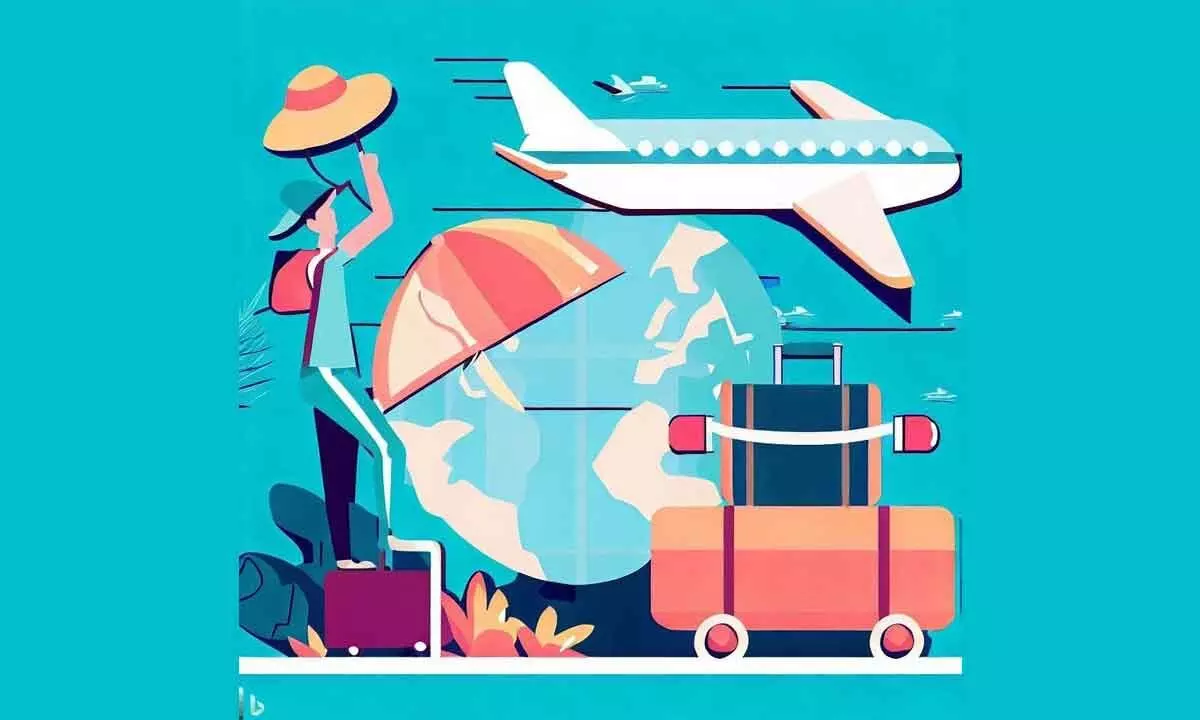Travel leaders embrace automation but workforce challenges remain
Airports and hotels exploring strategies to plug the worrisome human capital gap
image for illustrative purpose

Facing constraints in staffing up frontline roles, travel providers are using technology to ameliorate the problem in the short term. Half of hotels surveyed, and 99% of airport managers, say they are adopting new technology to bridge the labour gap. While leading tech adopters expect automation to decrease labour costs, few anticipate a drastic or imminent reduction in headcount
Travel, along with service industries more broadly, has recently faced unprecedented workforce challenges. The onset of lockdowns in 2020 sent workers home from their jobs in hotels, airports and aircraft almost overnight. Many months later, as occupancy rates and flown passenger volume rebounded from the pandemic lows, staffing lagged these demand metrics. Workers from the front lines of travel had seemingly landed elsewhere.
Covid-19 may have ushered in acute staffing woes, but longer-term forces contributed as well. And alongside these workforce dynamics, another long-term industry shift has continued: greater automation and general tech integration across the travel experience and the processes and humans that support it.
Much of this technology augments or alters human labour, such as digital room keys and data analytics for flight crew planning. Tech adoption is changing workforce management—from required skillsets and training and on boarding towards career and development.
As travel leaders navigate technology’s workforce implications, challenges abound, including employee readiness, traveler receptiveness, fragmented organizational structures, and orchestration across tech applications. Many leaders across aviation and hospitality are facing significant disruption in how they invest in technology and people. Deftly navigating the opportunities and stumbling blocks created by this new alchemy between technology and workforce could lay the foundation for a great work environment, a great customer experience, and overall success.
Facing constraints in staffing up frontline roles, travel providers are using technology to ameliorate the problem in the short term. Half of hotels surveyed, and 99% of airport managers, say they are adopting new technology to bridge the labour gap.
While leading tech adopters expect automation to decrease labour costs, few anticipate a drastic or imminent reduction in headcount. Only about a third of leading tech adopters expects technology to reduce the size of staff at their organizations over the next five years.
Tech has major impacts on the frontline workforce. It is changing required skills, such that nearly half of all respondents cite reskilling workers for new technology as one of their top three workforce concerns. In service of this aim, most are increasing their use of virtual reality tools for training scenarios.
Hotels and airports are confident that staffing levels will continue to climb but fewer than one in 10 expect to reach 2019 staffing levels by the end of 2023, while only a minority of them expects to get there any time in 2024. Even looking beyond 2030, a significant share of each group expects to remain below pre-pandemic staffing levels. Travel executives either expect a prolonged crisis or they anticipate that they will need fewer workers in the future.
Airlines interviewed are feeling the labour crunch as well. Shortages of pilots, mechanics and air traffic controllers are widely reported. But some airlines also face challenges around flight attendants, baggage handlers, and call centre workers.
It is not a simple matter of finding available workers willing to do the job. Matching needs to skills and maintaining capable teams has become more challenging. Some travel suppliers are already using technology to streamline hiring, using AI to identify suitable candidates and chatbots to provide a layer of mutual vetting between the prospect and the employer.
Solving recruiting, onboarding and training puzzles to keep frontline roles fully and optimally staffed can have bottom-line impacts. In extreme cases, understaffed hotels sometimes avail rooms, offline, and airlines can be forced to cancel flights. When storms throw airline networks into disarray, inadequate staffing can make it even harder to navigate those meltdowns satisfactorily for travelers. Understaffing also contributes to more chronic consequences.
Airports and hotels are exploring strategies to plug the human capital gap beyond efforts to retain talent. Many are hiring from previously untapped labour sources by partnering with industry and educational institutions to help shape the future workforce from the get-go.
Most chain properties are seeking more support from their headquarters, preferably in the form of investment in relationships with schools and institutes (61%), followed by support for better pay and benefits (56%), incentives (55%) and more centralized training (55%).
They are also turning to third parties to help with difficult-to-fill roles. Airports surveyed expect alternative sources to more than double as a share of their payroll, going from 17% in 2023 to 38% in 2030. Hotels hope for an increase from 28% to 37%. Baggage handlers and housekeeping are the roles most expected to be filled by gig, contract and temp workers. This staffing option addresses needs, but it is not without its challenges.
A shortage of homegrown experts is felt by many hotels and airports. Some leaders are also struggling with the competition with other industries for alternative workers.

